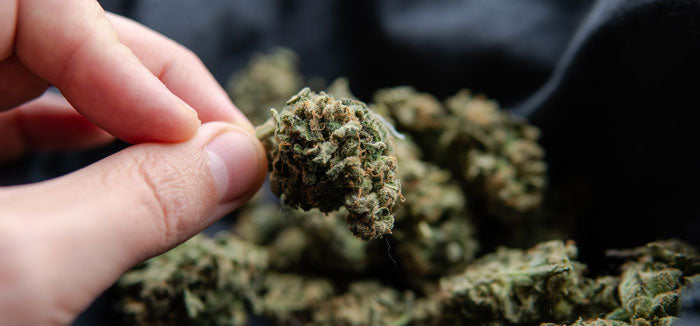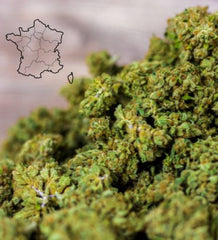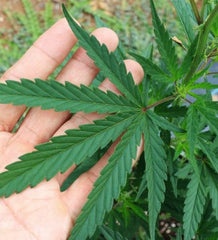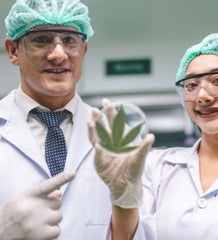
Fruits or Flowers - What are Cannabis Buds?
Extensive scientific research on the study of cannabis
Scientific research on cannabis aims to provide a new perspective on the plant so that it can be reevaluated. It seeks to highlight and prove the plant's many benefits through extensive experiments and studies. The plant has already been reevaluated by the World Health Organization thanks to study results proving that cannabidiol is completely devoid of psychoactive effects and provides numerous health benefits.
A study that only targets the consumed parts of the plant, but in fact, the rest of the marijuana plant can also be used, like the hemp fiber that makes 100% eco-friendly clothing. The study's goal is also to establish a strict and scientific nomenclature for cannabis so that all experts can agree. This is particularly true for the buds, which continue to be called flowers despite the recent discovery that they are actually a very specific fruit of marijuana.
Cannabis buds: the fruits of marijuana
After extensive research, the verdict is finally in. The female buds found on cannabis plants are so-called parthenocarpic fruits, not flowers, as we've always believed. The error is easy to explain, however, because parthenocarpic fruits are extremely rare in nature, and only a very small number of cannabis plants are capable of producing them.
This completely counterintuitive biological mechanism of parthenocarpy is often confused, even among experts in the field. This is a real nonsense that still holds many mysteries for us today, and many cannabis studies prefer to avoid the subject to avoid making mistakes. Yet it is an essential area to explore if we truly want to know and understand how the plant works.
Parthenocarpy—what exactly is it?
First of all, the parthenocarpic fruit is seedless. That is to say, parthenocarpy consists of developing a fruit that has not been previously fertilized. The parthenocarpic fruit cannot therefore be fertilized or produce seeds, a phenomenon that is only found in very few plants such as pineapples or bananas. The operating principle of this mechanism is to greatly increase the proliferation of plants while ensuring quality production at the level of the final product.
However, cannabis takes its peculiarities even further. Although we've just explained what a parthenocarpic fruit is, it turns out that cannabis fruit has some variations. Unlike other similar types of fruit, parthenocarpic cannabis fruit can be pollinated by a male plant and produce seeds if necessary. The fruit is then no longer produced because fertilization occurs. Its development will continue regardless, fertilization or not. However, it will never be too late to pollinate the fruit.
Cannabis Ban: A Blind Decision?
The decision to impose a blanket ban on cannabis did not have the desired effect. Instead of regulating its consumption, the plant became a significant source of income for dealers and criminal circles without affecting consumption levels. This outcome could have been predicted in advance, given a bit of history, particularly Prohibition, when alcohol was a banned substance in the United States. Overall consumption did not decline, but production sources shifted to the benefit of organized crime.
Furthermore, unlike tobacco or alcohol, cannabis does not kill. It would even be almost impossible to die from it, given the enormous quantity that must be absorbed in a short time. This is a fact that governments certainly did not take into account before proclaiming a general ban on the consumption of such a product. Fortunately, more and more scientific studies are showing the true face of cannabis and what it can bring. This is why more and more states and countries are backtracking to allow its consumption again so that it is better regulated and stops funding unscrupulous people.
What other conclusions can be drawn from these studies?
 The ban on cannabis consumption led to its shelving for many years. As a result, the plant isn't properly nomenclatured, and it's sometimes difficult for two scientists to exchange precise terms in their reports. This is why we sometimes find the same word that doesn't refer to the same thing. Indeed, the term marijuana is used for the plant itself but also for the parts that are consumed. The same goes for pollen, which refers to a specific type of hashish.
The ban on cannabis consumption led to its shelving for many years. As a result, the plant isn't properly nomenclatured, and it's sometimes difficult for two scientists to exchange precise terms in their reports. This is why we sometimes find the same word that doesn't refer to the same thing. Indeed, the term marijuana is used for the plant itself but also for the parts that are consumed. The same goes for pollen, which refers to a specific type of hashish.
It is therefore important for the scientific community to agree on the terms to use in order to determine a reliable nomenclature for cannabis. This will allow research results to be more precise in detail, but it will also allow scientists to better understand each other. This will make it easier to take over the research work of another collaborator in order to save time and be able to more efficiently advance research on this plant with its many benefits.
Jumping to conclusions about CBD
Furthermore, we can conclude that the vision held for years on cannabis is erroneous following a hasty political decision. Although THC has notable psychoactive effects, it is entirely possible to circumvent them in order to highlight the benefits of CBD which are praised in many fields of medicine. Cannabidiol is indeed recognized for helping to calm significant stress and calm anxiety. It is also a very useful molecule for our body since it is already naturally present. In the end, we can conclude that this sidelining may seem unfair when the plant just needed well-defined regulations around its consumption.
Now you know everything there is to know about cannabis buds and the fact that they are fruits. This news could change your perspective on the plant and its parthenocarpic characteristics that make it so unique. Although many gray areas still persist regarding this mode of functioning, some studies are eager to delve into this vexed subject in order to provide answers. However, it's understandable why many researchers are reluctant to venture into this area to publish their studies.





